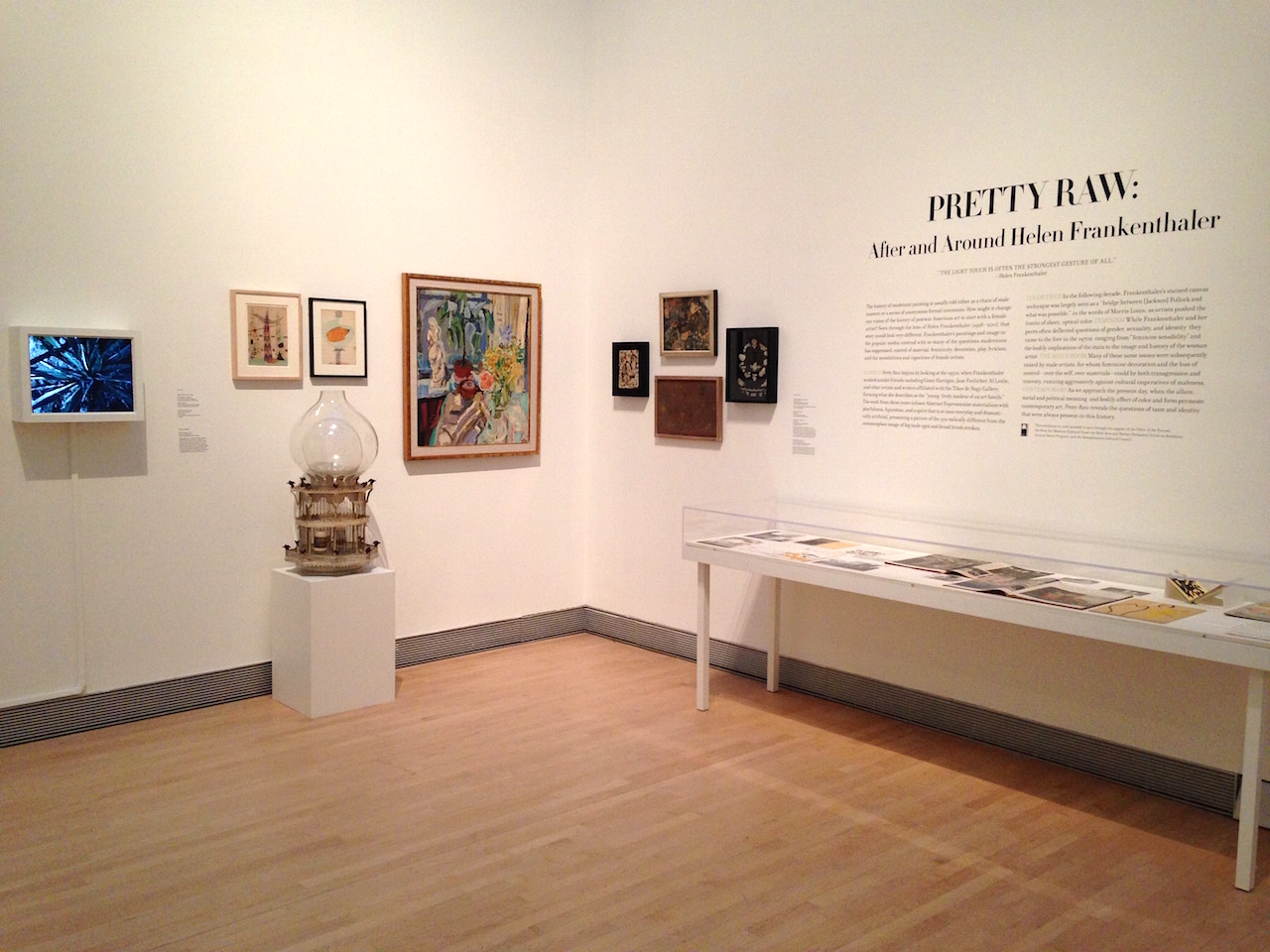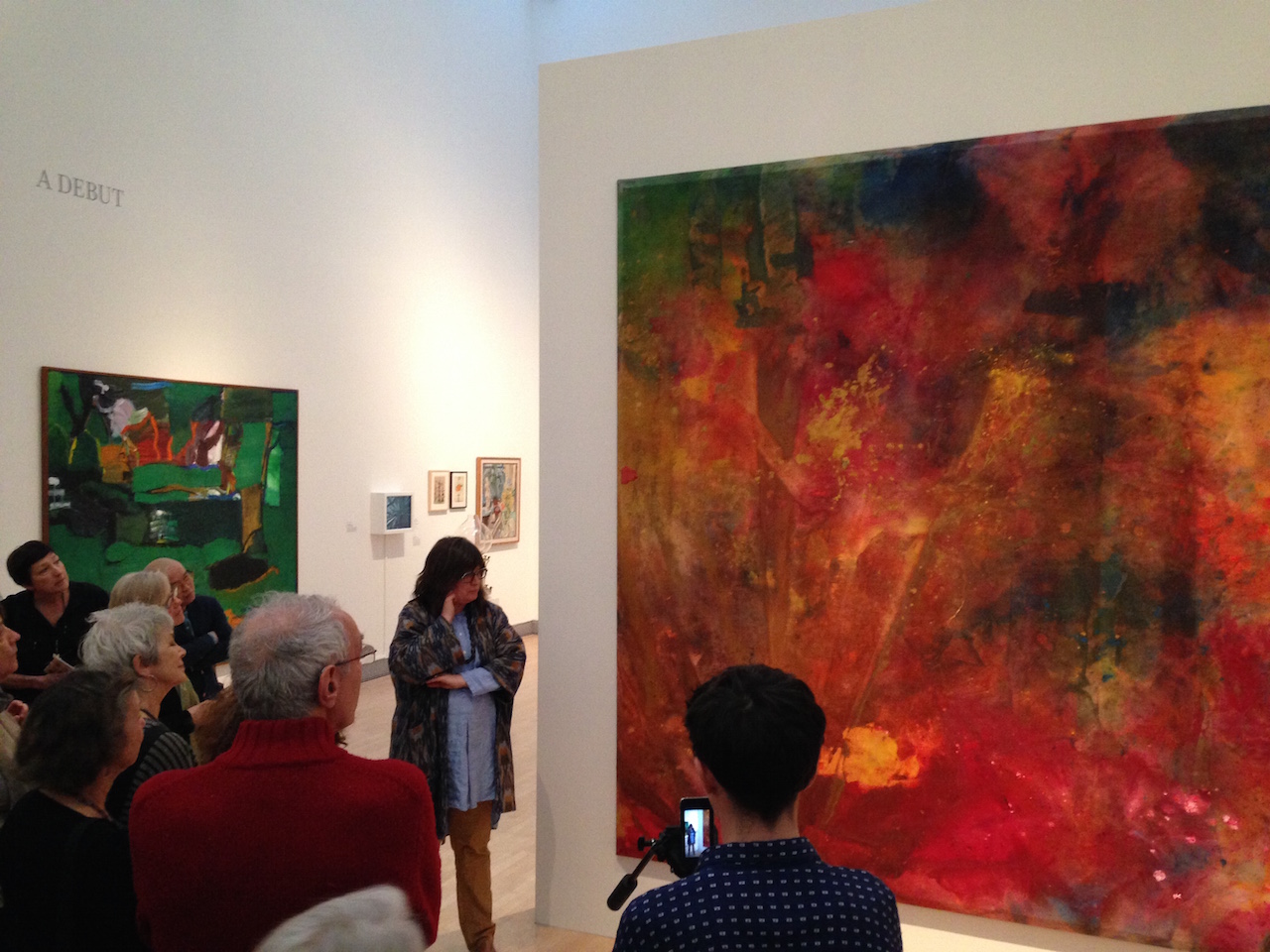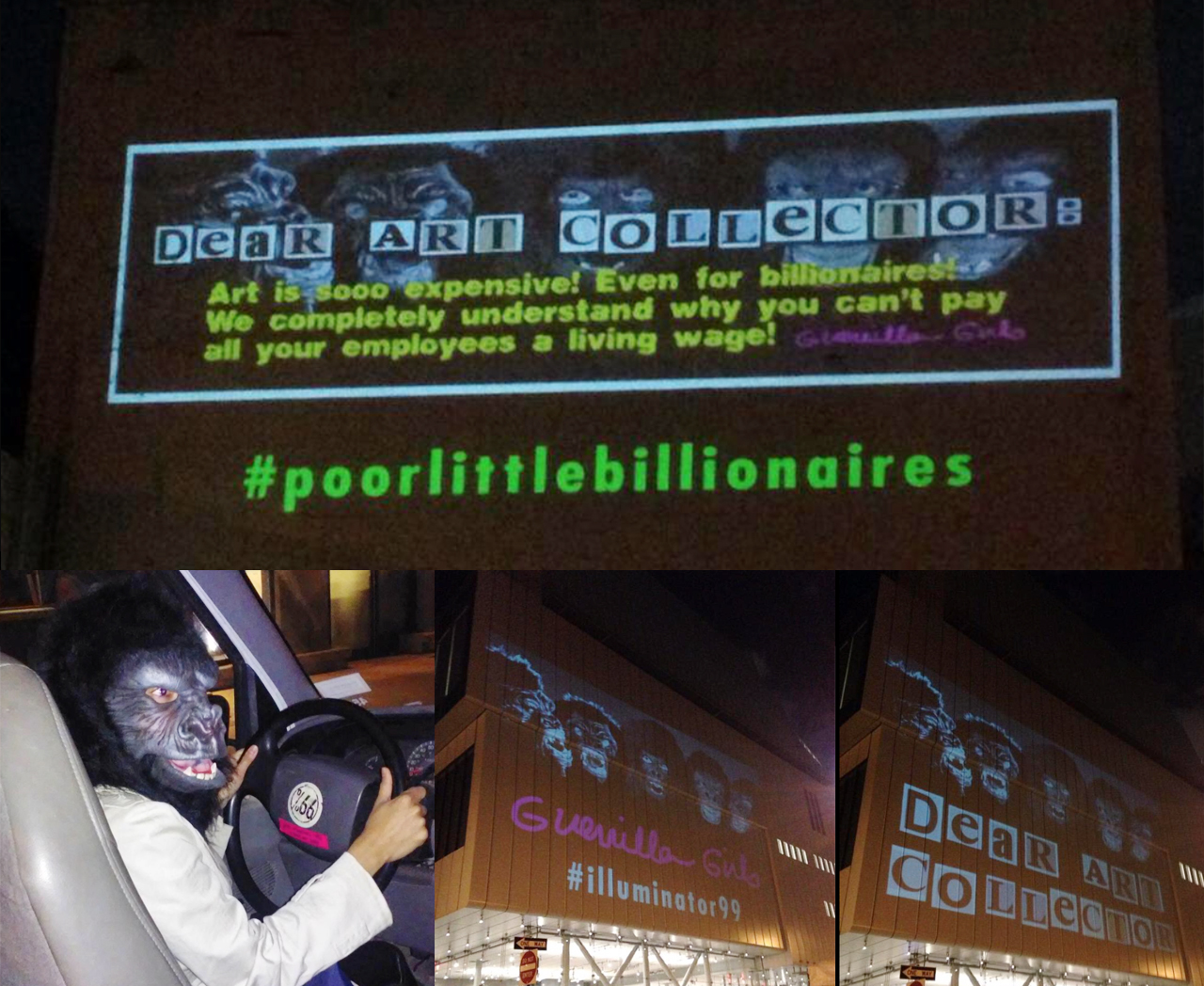
Installation
view of “Pretty Raw: After and Around Helen Frankenthaler,” showing
work by Dona Nelson, Jackie Saccoccio, Carrie Moyer, and Laura Owens
(courtesy Rose Art Museum, Brandeis University. Photo by Charles Mayer)
WALTHAM, Mass. — To say that painting is having a moment would be
ironic — since, despite periodic claims regarding its demise or return,
it clearly never went very far away. But we do seem to be in the midst
of another wave of attention, including Laura Hoptman’s provocative
The Forever Now: Contemporary Painting in an Atemporal World at the Museum of Modern Art and Katy Siegel’s
Pretty Raw: After and Around Helen Frankenthaler at Brandeis University’s Rose Art Museum.
Pretty Raw began as a book, Siegel’s soon to be published
“The heroine Paint”: After Frankenthaler.
Taking advantage of her role as curator-at-large at the Rose, she is
presenting a closely related exhibition that incorporates some of the
museum’s strong holdings in postwar painting. Although there are a few
overlaps between Hoptman and Siegel’s projects (Laura Owens and Mary
Weatherford in the exhibition, joined by Amy Sillman in the book), the
contemporary work in
Pretty Raw is part of a revisionist history that Siegel had already begun to articulate in her 2006 exhibition
High Times, Hard Times,
where she traced New York painting’s turn toward an inclusive approach —
in every sense — to the medium during the 1960s and ’70s.

Helen
Frankenthaler, “Giant Step” (1975). Private Collection (© 2015 Helen
Frankenthaler Foundation, Inc. Artists Rights Society (ARS), New York.
Photograph courtesy Gagosian Gallery)
Both the Rose Museum exhibition and the associated book present Helen
Frankenthaler as a pivotal figure. Yet her role here is very different
from her portrayal as a conduit (or “bridge” according to Morris Louis)
in the histories of Abstract Expressionism starring the big boy
painters, and in Clement Greenberg’s formalism. In those versions of the
story, Frankenthaler was the connective link between Jackson Pollock
and later Color Field painting, having embarked upon her stain technique
after seeing Pollock’s use of unprimed canvas (an introduction
engineered by Greenberg), and in turn inspiring the large pours by Louis
that Greenberg latched onto as a continuation of the medium’s formal
concerns.

Opening with work and ephemera associated with the Tibor de Nagy Gallery (photo by the author for Hyperallergic)
By contrast,
Pretty Raw positions Frankenthaler as central
to an alternative account of second-generation artists figured as more
“feminine,” not only for the contributions of Frankenthaler, Grace
Hartigan, Jane Freilicher, and other women, but also for the gay artists
who presented a counterpoint to the previous generation’s macho
posturing. (Although not part of this exhibition, Jasper Johns’s 1960
“Painting with Two Balls” is relevant, given his recollection to David
Bourdon regarding its direct dig at Abstract Expressionist enthusiasm
for “ballsy” painting.) Here Frankenthaler is one of a group of artists
associated with the Tibor de Nagy Gallery, where an embrace of a younger
generation of painters was intermixed with what Frankenthaler described
in a
1968 interview with Barbara Rose as a “wild camp” aesthetic — an inclusive approach that is signaled at the opening of
Pretty Raw by an eclectic grouping of objects, drawings, and ephemera.
Although the exhibition features a Louis stain painting from the Rose
collection (“Number 3,” 1961), Siegel’s overall emphasis is on the more
radical possibilities of departure evident in Lynda Benglis’s 1970
“Untitled,” made from pours of pigmented polyurethane foam, which
appears nearby. The story of experimentation continues with a long
stretch of painted fabric by Robert Kushner hanging in front of a corner
where a video screen showing his 1978
Duet, from the performance piece
Layers, reveals that the object originally functioned as a prop.

Works by Janine Antoni, Cheryl Donegan, Kara Walker, and Polly Apfelbaum (photo by the author for Hyperallergic)
At various points the arrangement of the exhibition encourages an
interplay between viewers’ spatial awareness and perception of the
artists’ embodied gestures: oblique connections are established, for
example, by the proximity of a floor piece by Polly Apfelbaum (“Blue
Haired Nirvana,” 1997), photographs of Janine Antoni painting the floor
with hair dye for her 1993 “Loving Care,” Cheryl Donegan’s 1993 video
Head,
with its suggestive play with a stream of milk, and Kara Walker’s
unexpected response to Rorschach patterns in a 1995 series of untitled
ink and pencil drawings. The body is also evoked in the “Men’s Room”
section of the exhibition (entered through a Felix Gonzalez-Torres
beaded curtain) by Carroll Dunham’s cartoon-like rendering of phallic
forms (“Shape with Points,” 1989-90) or the urination process Andy
Warhol employed for his 1978 “Oxidation Paintings” – even as gender
identifications are complicated by “BC (4646),” Sterling Ruby’s 2013
quilt-inspired painting.
Starting this narrative with Frankenthaler is a political gesture,
yet the rebalancing of the historical record is hardly the only thematic
emphasis. Clearly a lot has changed in the interval since the “shock”
Barbara Rose described upon seeing
photographs
of Frankenthaler and Hartigan standing amidst their large canvases in
“paint-splattered jeans.” However Frankenthaler was hardly alone in her
hostility to being categorized as a woman artist, responding to
inevitable questions with a defensive insistence on her identity as a
painter, pure and simple.

Helen
Frankenthaler, “Flirt” (1995). Helen Frankenthaler Foundation (© 2015
Helen Frankenthaler Foundation, Inc. Artists Rights Society (ARS), New
York. Photography courtesy Gagosian Gallery)
It was therefore striking that Carrie Moyer and Kathy Butterly took
the opportunity of a public conversation with Siegel to talk about color
— with Moyer zeroing in on the over-the-top palette in Sam Gilliam’s
1969 “Along” and Butterly highlighting the materiality of pigment in
Benglis’s poured polyurethane. Yet it is important to see this emphasis
in relation to what Sillman characterizes as the “politics of color” in
“House of Frankenthaler” (her contribution to the forthcoming
heroine Paint),
where she playfully questions the impetus “to recuse oneself from too
much color, as a gesture of solemnity and gravitas.” While this show is
not solely focused on women, or paint, or color, it includes a lot of
all three. More importantly, it presents a framework for an interwoven
appreciation of the political as well as aesthetic impact of subtle acts
of subversion, such as Moyer’s combination of poured marks and areas of
glitter. In the context established by “Pretty Raw,” the decision to
emphasize color does not come off as a defensive move (talking about
aesthetics rather than identity), but indicates instead how a
rebalancing of the larger narrative opens up space to explore a range of
diverse yet interrelated concerns.

Carrie
Moyer talking about Sam Gilliam, with Grace Hartigan’s work visible in
the background (photo by the author for Hyperallergic)
One important aspect of the exhibition is its inclusive embrace of
contemporary practices that have responded in one way or another to
earlier explorations of painting’s expressive potential. The other is
Frankenthaler herself. The show opens with a painting that is clearly
related to her well-known “Mountains and Sea” (1952). But the canvases
threaded throughout the galleries demonstrate the dynamic impact of her
ongoing investigation of color and gesture in the decades following this
often-reproduced “bridge” painting.
Pretty Raw: After and Around Helen Frankenthaler continues at the Rose Art Museum, Brandeis University (415 South Street, Waltham, Massachusetts) through June 7.
Tagged as:
Andy Warhol,
Carrie Moyer,
Carroll Dunham,
Cheryl Donegan,
Featured,
Felix Gonzalez-Torres,
Helen Frankenthaler,
Janine Antoni,
Kara Walker,
Kathy Butterly,
Katy Siegel,
Lynda Benglis,
Morris Louis,
Polly Apfelbaum,
Robert Kushner,
Rose Art Museum,
Sam Gilliam,
Sterling Ruby









